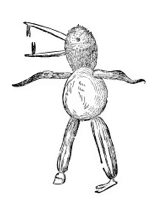Considered one of the most exciting and significant discoveries in neuroscience, mirror neurons are neurons located in "key parts of our brains—the premotor cortex and centers for language, empathy and pain—and fire not only as we perform a certain action but when we watch someone else perform that action" (Dobbs 22). Mirror neurons not only explain a lot about how our bodies learn to perform both simple and complex physical tasks, but are also crucial with respect to our emotional and psychosocial functioning—i.e., how we read the emotions of others, develop empathy, and learn to identify and process our own emotional states. In a 2006 article for Scientific American Mind, science writer David Dobbs noted that: "At a deeper level, [mirror neurons suggest] a biological dynamic for our understanding of others, the complex exchange of ideas we call culture, and psychosocial dysfunctions ranging from lack of empathy to autism. Comprehending mirror neurons helps us make sense of why yawns are contagious to why, watching Olivier fall to his knees, we feel Hamlet's grief for Ophelia" (24).
Attributing mirror neurons and imitation learning as the source of the "great leap forward" in human evolution, V.S. Ramachandran, one of the scientists at the forefront of studies in mirror neurons, has claimed that "[ . . . ] mirror neurons will do for psychology what DNA did for biology: they will provide a unifying framework and help explain a host of mental abilities that have hitherto remained mysterious and inaccessible to experiments" (Ramachandran, "Mirror Neurons and Imitation Learning as the Driving Force Behind the Great Leap Forward in Human Evolution"). Hailed by Sandra Blakeslee in a 2006 New York Times article as "Cells That Read Minds," mirror neurons enable us to analyze scenes in order to distinguish intent (Blakeslee). They guide us in making the cognitive distinctions by which we determine whether someone is picking up a glass to drink from it, or picking up a glass in order to begin clearing a table, or picking up a glass to throw a drink in our face (Dobbs 26). One of the original team members who first discovered mirror neurons at The University of Parma in 1991, Dr. Giacomo Rizzolatti, framed the significance of this discovery primarily in terms of its emotional and social implications. Rizzolatti stated, "We are exquisitely social creatures [ . . . ] Our survival depends on understanding the actions, intentions and emotions of others. [ . . . ] Mirror neurons allow us to grasp the minds of others not through conceptual reasoning but through direct simulation. By feeling, not by thinking" (Blakeslee).
This application has been consistently borne out by scientists such as Dr. Christian Keysers, who studies the neurological implications of empathy at the University of Groningen in the Netherlands, and discovered that the ability to share the emotions of others is intimately linked to mirror neurons. Interestingly enough, people who test high on a psychological scale registering empathy, have particularly active mirror neuron systems. According to Dr. Keysers, social emotions like guilt, shame, pride, embarrassment, disgust and lust are based on a uniquely human mirror neuron system found in a part of the brain called the insula. In his experiments, Dr. Keysers found that when people watched a hand go forward to caress someone and then saw another hand push it away rudely, the insula registered the social pain of rejection, indicating that social emotions such as humiliation are mapped in the brain by the same mechanisms that encode real physical pain (Blakeslee).
Fascinating, yes, but what do mirror neurons have to do with poetry? Intriguingly, one of the most active sites of mirror-neuron systems is located in the "Broca's area," an area of the brain crucial to language processing. In 1998, Dr. Michael Arbib, a neuroscientist at U.S.C., discovered that language itself appears to rise from the same syntactic understanding of action generated by our mirror neurons. Furthermore, in 2005, experiments conducted by Drs. Gallese and Rizzolatti of the original Parma team, indicated that when people listen to sentences describing actions, the same mirror neurons fire that would fire if the people had been either performing the actions described, or visually witnessing the actions being described (Dobbs 25). The implications for this in terms of both considering and reconsidering how writers and readers both create and respond to language—in particular, poetry—seem fabulously rich. For example, in specifically focusing on the research conducted by V.S. Ramachandran on mirror neurons and phantom limbs, one can begin to make a number of very interesting connections between neuroscience and poetry—thereby arriving at new ways of thinking about the neurocognitive and affective functions of poems of loss and elegy.
To continue reading this essay, please click here to purchase jubilat 21.



